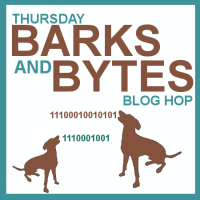My dog is one in a million. Probably more.

My Dog
And I say this both in the way that most pet owners do about their pets, but also to allude to what has turned out to be an extremely rare condition that is causing us all a lot of stress and sorrow – Moses more so than the rest of us, of course.
The diagnosis is in, and it’s a c-word, but not the one we were previously worried about for a bit there. Moses has been diagnosed with a subarachnoid cyst. One vet pointed out the silver lining by noting that hey, at least a cyst is probably benign. Touché.
In the usual course, I immediately started looking for good resources on these cysts. Because they definitely weren’t on my radar before.
The most useful resource I found was a retrospective study from the Journal of the American Animal Hospital Association. This study looks at spinal arachnoid cysts in 17 dogs between 1987-2001 at North Carolina State University’s Veterinary Teaching Hospital.
Brace yourself for some medical jargon.
These types of cysts (though most sources take a moment to point out that they’re not technically a “cyst” because they don’t have an epithelial lining – yes there will be a quiz on this later) are broken into two groups: cervical arachnoid cysts and thoracolumbar cysts.
Moses qualifies for the first group: cervical arachnoid cyst. Our report back made the distinction of “subarachnoid”, but I’m given to understand the added prefix doesn’t change anything; arachnoid cysts typically occur in the dorsal subarachnoid space in the cervical vertebrae. And I can actually say I know what that means. To see for yourself, see this diagram of the spinal cord.
These cervical arachnoid cysts, according to the study, are typical found in young, large breed dogs, and are found higher up on the spine in the neck/shoulders (in Moses’ case, the C5-C6 vertebrae). The other kind of cyst is more commonly found in older, small breed dogs, and is found much lower on the spine – the thoracic vertebrae.
The listed symptoms are exactly what we noticed in Moses: progressive ataxia (wobbliness), reduced range of motion, scraping knuckles, but no pain. The cysts enlarge over time, and cause nerve pinching.
In the study, surgery was performed on 15 of the 17 dogs (with both kinds of cysts), and according to this study and the other resources I came across, surgery appears to be the favoured treatment, and very little (if anything) is written about medical management options or success, or alternative/unconventional options (though our report back quickly noted hyperbaric oxygen treatment as a potential novel option).
Of the 15 dogs in the study who underwent surgery, 14 had good short term results. 12 of those dogs were followed up with, and 8 of the 12 had good long term results (67%).
6 of the 15 dogs who underwent surgery were large breed dogs with the same type of cyst we’re faced with. The short-term post-surgery results were good in all. The long term results were good in four of the six (67% again). The other two dogs experienced a recurrence of the symptoms 18-26 months after surgery.

Moses' post-myelogram bald spot.
So that’s what we’re faced with: a spinal cyst that requires surgical removal in order to give Moses any real shot at going back to healthy and active (noting that carting and long day hikes are indefinitely out of the question regardless).
And odds at long-term recovery are estimated at 67% based on the study I’ve discussed, or bumped up to 70% based on the expert report we got for Moses.
The reports and our vets all note that factors influencing a good outcome are: age (3 years or younger, and Moses is 3 years and 3 months old right now), length of time symptoms are noted (4 months or less, and we’re right about at the 4 month point now), lack of other medical conditions that could impact recovery (none here), and the surgical method used (out of our hands, but our gal is the best).
So, in an ideal world, Moses would recover reasonably well and have a good shot at long term success with surgery. And I’ve done my best to quantify “good”.
On the other hand, I can’t help but think about how long it has taken him to recover from the CT scan and myelogram from last week – it was several days before he could get up on his own and the tile floor is still a challenge.

Moses also has a bald spot on his rump from having to try the myelogram from the other direction - it's kind of like a canine tramp stamp. And, sadly, it's not growing back nearly as fast as the other one.
And although it may seem foolish to consider success rates based on one retrospective study from 2003, that brings me back to how our dog is one in a million; these cysts are very rare, and the study comments that spinal arachnoid cysts have been reported in only 28 dogs and 3 cats since 1968.
Understandably, and unfortunately, the small number of dogs studied has also meant there is no firm conclusion about the cause of these cysts. Based on the occurrence younger dogs, they expect a congenial condition. Another study that looked at 11 dogs with spinal arachnoid cysts hypothesized a genetic predisposition related to the dog’s confirmation (they suggest weight of the head being a possible influencing factor) noting that 6 of those 11 dogs were Rottweilers.

Moses
So that’s the situation we’re faced with.
And no, surgery is not cheap. We will definitely max out our annual policy limit and then some (though I am pleased to report that so far insurance has paid out for our significant diagnostic costs without fuss), and it’s a question about putting Moses through an extensive procedure with long recovery and rehabilitation time, and without any real guarantee for success.
We have until next Monday to weigh all the variables in advance of another discussion with the vet.
And after all of this research and reading I’ve been doing lately on each possible diagnosis, I figure I’m probably in line for at least an honorary DVM by now.




















